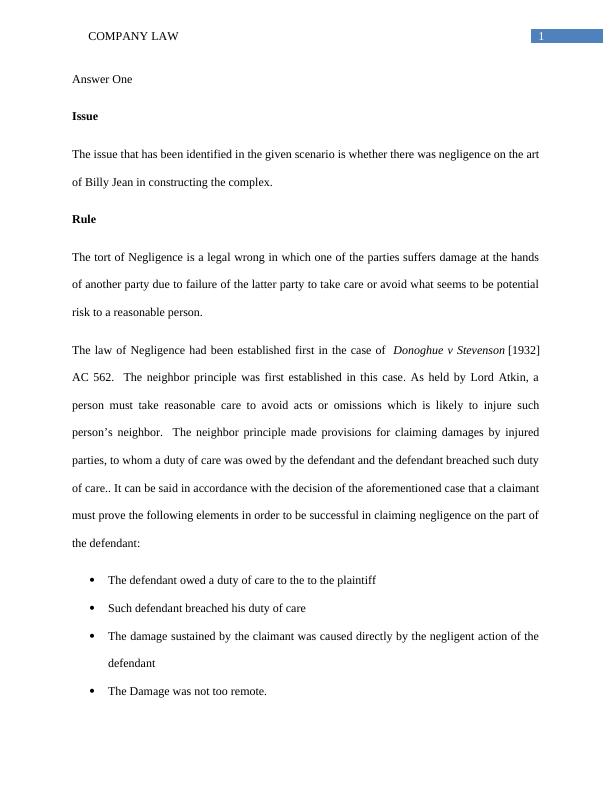Negligence and Pure Economic Loss in Construction: A Case Study Analysis
Answering legal questions related to the built environment, applying relevant laws and expressing opinions based on the expected legal result.
10 Pages2398 Words112 Views
Added on 2023-06-13
About This Document
This article discusses a case study on negligence and pure economic loss in construction, analyzing the legal principles and their application. It explores the duty of care owed by builders and the liability for latent defects. The first part of the article focuses on the essential elements of negligence, while the second part discusses the recovery of pure economic loss. The case study involves a builder, Billy Jean, who constructed a complex with latent defects, causing Donald & Co. to sustain a pure economic loss of $40 million.
Negligence and Pure Economic Loss in Construction: A Case Study Analysis
Answering legal questions related to the built environment, applying relevant laws and expressing opinions based on the expected legal result.
Added on 2023-06-13
ShareRelated Documents
End of preview
Want to access all the pages? Upload your documents or become a member.
Negligence Claim against Aldi Supermarket: Elements and Defenses
|6
|1446
|283
Commercial Law Issues - Assignment
|13
|2932
|18
Business Law: Negligence and Recovery of Economic Loss
|6
|1050
|191
English Tort Law Assignment
|9
|2899
|81
Analysis of Negligence Liability in the Case of Cliff and Mary vs Susan
|7
|2264
|195
Business Law: Negligence and Ethical Decision Making
|12
|2896
|243



